1 of 10
Download to read offline

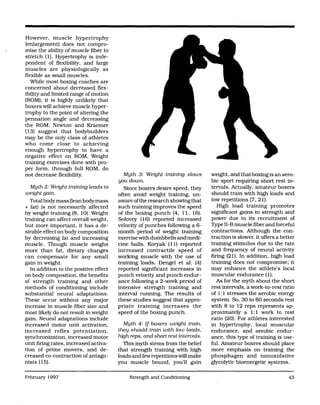
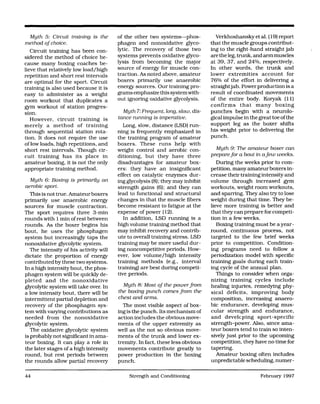


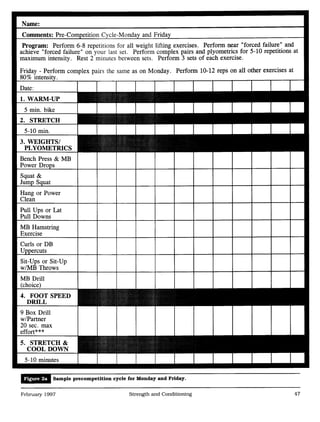
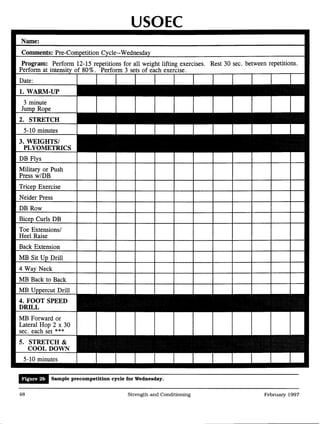


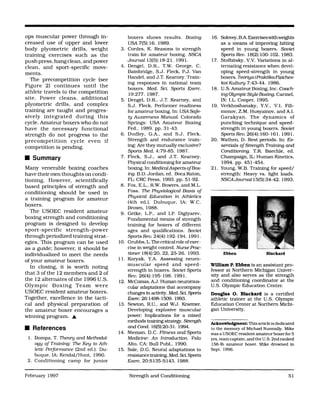
Ad
Recommended
Reuni├Żo de C├ómara 05/03/2014 - AtaPedro Pires
╠²
Este documento resume os principais pontos discutidos em uma reuni├Żo da C├ómara Municipal de Vieira do Minho realizada em 5 de mar├¦o de 2014. A reuni├Żo discutiu pedidos de compra e aluguel de habita├¦├Ąes sociais, solicita├¦├Ąes de espa├¦os p├║blicos por associa├¦├Ąes locais, redu├¦├Żo do hor├Īrio de um estabelecimento comercial e declara├¦├Ąes de interesse tur├Łstico.#WhyILoveLearning
#WhyILoveLearningLidia Pearce
╠²
In the days running up to St Valentine's Day 2015, elearning company, Sponge UK asked people on social media to explain #WhyILoveLearning.
Here are some of the contributions.Communication
Communication║▌║▌▀ŻStoreHouse
╠²
The document contains extensive examples and descriptions regarding various forms of communication and public speaking skills, focusing on elements like audience awareness, body language, and written communication. It also highlights the importance of revisions, critical listening, and the use of multiple platforms for effective communication. Overall, it emphasizes the significance of developing diverse communication skills for effective interpersonal interactions.Training FUTURUM : Accounting for Non-Accountant, Jakarta
Training FUTURUM : Accounting for Non-Accountant, Jakartamputrawal
╠²
Pelatihan ini membahas dasar-dasar akuntansi untuk non-akuntan, meliputi pengertian akuntansi, pengguna informasi akuntansi, laporan keuangan, dan prinsip-prinsip akuntansi umum. Materi pelatihan mencakup neraca, laporan laba rugi, laporan arus kas, perusahaan, akuntansi double entry, penggunaan laporan keuangan untuk analisis keuangan, penyusunan anggaran, audit, dan etika akuntansi. Pelatihan ini diselengg_ąæąĄąĘąŠą┐ą░čüąĮąŠčüčéčī_ą┐čĆąĄąĘąĄąĮčéą░čåąĖčÅ ą┤ą╗čÅ ą│ąŠčüąŠčĆą│ą░ąĮąĖąĘą░čåąĖą╣.pdf
_ąæąĄąĘąŠą┐ą░čüąĮąŠčüčéčī_ą┐čĆąĄąĘąĄąĮčéą░čåąĖčÅ ą┤ą╗čÅ ą│ąŠčüąŠčĆą│ą░ąĮąĖąĘą░čåąĖą╣.pdfąĢą│ąŠčĆ ąĪą║čĆąĖą▒čāąĮąŠą▓
╠²
ąöąŠą║čāą╝ąĄąĮčé ąŠą┐ąĖčüčŗą▓ą░ąĄčé čāčüą╗čāą│ąĖ ąĖąĮč乊čĆą╝ą░čåąĖąŠąĮąĮąŠą╣ ą▒ąĄąĘąŠą┐ą░čüąĮąŠčüčéąĖ ą┤ą╗čÅ ą│ąŠčüčāą┤ą░čĆčüčéą▓ąĄąĮąĮčŗčģ ąŠčĆą│ą░ąĮąĖąĘą░čåąĖą╣, ą░ą║čåąĄąĮčéąĖčĆčāčÅ ą▓ąĮąĖą╝ą░ąĮąĖąĄ ąĮą░ ąĘą░čēąĖč鹥 ą┐ąĄčĆčüąŠąĮą░ą╗čīąĮčŗčģ ą┤ą░ąĮąĮčŗčģ ąĖ čüąŠą▒ą╗čÄą┤ąĄąĮąĖąĖ čéčĆąĄą▒ąŠą▓ą░ąĮąĖą╣ ąĘą░ą║ąŠąĮąŠą┤ą░č鹥ą╗čīčüčéą▓ą░. ąĀą░čüčüą╝ą░čéčĆąĖą▓ą░čÄčéčüčÅ čĆąĖčüą║ąĖ, čāą│čĆąŠąĘčŗ ąĖ čĆąĄąČąĖą╝čŗ ąĘą░čēąĖčéčŗ ą║ąŠąĮčäąĖą┤ąĄąĮčåąĖą░ą╗čīąĮąŠą╣ ąĖąĮč乊čĆą╝ą░čåąĖąĖ, ą░ čéą░ą║ąČąĄ ąŠą▒čÅąĘą░č鹥ą╗čīąĮąŠčüčéčī ą░čéč鹥čüčéą░čåąĖąĖ ąĖąĮč乊čĆą╝ą░čåąĖąŠąĮąĮčŗčģ čüąĖčüč鹥ą╝. ąŻą┐ąŠą╝ąĖąĮą░čÄčéčüčÅ čĆąĄą░ą╗ąĖąĘąŠą▓ą░ąĮąĮčŗąĄ ą┐čĆąŠąĄą║čéčŗ ąĖ ą┐ąŠą╗ąŠąČąĖč鹥ą╗čīąĮčŗąĄ ąŠčéąĘčŗą▓čŗ ąŠ čüąŠčéčĆčāą┤ąĮąĖč湥čüčéą▓ąĄ čü ą║ąŠą╝ą┐ą░ąĮąĖąĄą╣, ą┐čĆąĄą┤ąŠčüčéą░ą▓ą╗čÅčÄčēąĄą╣ čŹčéąĖ čāčüą╗čāą│ąĖ.Turnover rate
Turnover rateSBlanchard99_11
╠²
This document discusses ways for Panera Bread to reduce employee turnover rate. It identifies opportunities like scheduling employees outside their availability and lack of training follow up. Strategic options are proposed like comparing schedules to employee availability and increasing training hours. Implementing experienced supervisors, structured interview and training processes, and reviewing applications could help lower turnover through improved communication, scheduling and training.VINI, VILLE E SAPORI 2014 | Antonio Puzzi
VINI, VILLE E SAPORI 2014 | Antonio Puzzi Creactivitas
╠²
Il documento esplora il viaggio culturale e gastronomico nel Mediterraneo attraverso il prisma del movimento Slow Food, mettendo in evidenza la biodiversit├Ā agroalimentare italiana e le comunit├Ā del cibo. Sottolinea l'importanza della tradizione culinaria e della sostenibilit├Ā, proponendo alleanze locali e percorsi di conoscenza per valorizzare i prodotti tipici. Inoltre, promuove l'idea della 'comunit├Ā di destino' legata alla cittadinanza terrestre e alla consapevolezza del legame tra le persone e il pianeta.ą£ąĄą┤ąĖčåąĖąĮčüą║ąŠąĄ ąŠą▒čüą╗čāąČąĖą▓ą░ąĮąĖąĄ ą▓ąĄč鹥čĆą░ąĮąŠą▓ ąÆąĄą╗ąĖą║ąŠą╣ ą×č鹥č湥čüčéą▓ąĄąĮąĮąŠą╣ ą▓ąŠą╣ąĮčŗ ą▓ ąÜąĄą╝ąĄčĆąŠą▓čüą║ąŠą╣ ...
ą£ąĄą┤ąĖčåąĖąĮčüą║ąŠąĄ ąŠą▒čüą╗čāąČąĖą▓ą░ąĮąĖąĄ ą▓ąĄč鹥čĆą░ąĮąŠą▓ ąÆąĄą╗ąĖą║ąŠą╣ ą×č鹥č湥čüčéą▓ąĄąĮąĮąŠą╣ ą▓ąŠą╣ąĮčŗ ą▓ ąÜąĄą╝ąĄčĆąŠą▓čüą║ąŠą╣ ...ąÜąĄą╝ąĄčĆąŠą▓čüą║ą░čÅ ąŠą▒ą╗ą░čüčéąĮą░čÅ ąĮą░čāčćąĮą░čÅ ą╝ąĄą┤ąĖčåąĖąĮčüą║ą░čÅ ą▒ąĖą▒ą╗ąĖąŠč鹥ą║ą░
╠²
ąöąŠą║čāą╝ąĄąĮčé ą┐čĆąĄą┤čüčéą░ą▓ą╗čÅąĄčé čüąŠą▒ąŠą╣ čĆąĄą║ąŠą╝ąĄąĮą┤ą░č鹥ą╗čīąĮčŗą╣ čüą┐ąĖčüąŠą║ ą╗ąĖč鹥čĆą░čéčāčĆčŗ ą┐ąŠ ą╝ąĄą┤ąĖčåąĖąĮčüą║ąŠą╝čā ąŠą▒čüą╗čāąČąĖą▓ą░ąĮąĖčÄ ą▓ąĄč鹥čĆą░ąĮąŠą▓ ąÆąĄą╗ąĖą║ąŠą╣ ą×č鹥č湥čüčéą▓ąĄąĮąĮąŠą╣ ą▓ąŠą╣ąĮčŗ ą▓ ąÜčāąĘą▒ą░čüčüąĄ ąĘą░ 2004-2014 ą│ąŠą┤čŗ. ąÆ ąĮąĄą╝ čüąŠą┤ąĄčƹȹĖčéčüčÅ ąĖąĮč乊čĆą╝ą░čåąĖčÅ ąŠ ą║ąĮąĖą│ą░čģ ąĖ čüčéą░čéčīčÅčģ, ą░ čéą░ą║ąČąĄ ą┤ą░ąĮąĮčŗąĄ ąŠą▒ ąŠčĆą│ą░ąĮąĖąĘą░čåąĖąĖ ą╝ąĄą┤ąĖčåąĖąĮčüą║ąŠą╣ ą┐ąŠą╝ąŠčēąĖ ąĖ ą│ąŠčüą┐ąĖčéą░ą╗čÅčģ ą┤ą╗čÅ ą▓ąĄč鹥čĆą░ąĮąŠą▓ ą▓ čĆąĄą│ąĖąŠąĮąĄ. ą×ąĮ ą┐čĆąĄą┤ąĮą░ąĘąĮą░č湥ąĮ ą┤ą╗čÅ ąĮą░čāčćąĮčŗčģ ąĖ ą╝ąĄą┤ąĖčåąĖąĮčüą║ąĖčģ čĆą░ą▒ąŠčéąĮąĖą║ąŠą▓, ąĘą░ąĖąĮč鹥čĆąĄčüąŠą▓ą░ąĮąĮčŗčģ ą▓ ą▓ąŠą┐čĆąŠčüą░čģ ąĘą┤čĆą░ą▓ąŠąŠčģčĆą░ąĮąĄąĮąĖčÅ ą┤ą░ąĮąĮąŠą╣ ą║ą░č鹥ą│ąŠčĆąĖąĖ ą│čĆą░ąČą┤ą░ąĮ.The 98AliveTeaTree Blog
The 98AliveTeaTree BlogNaturally Healthy Wellness
╠²
Want To Live A Youthful, Energetic, Long And Happy Life? Discover 98Alive
http://teatreemelaleuca.com.au2015.01.06 f sharp_intro_milan_kubicek
2015.01.06 f sharp_intro_milan_kubicekMilan Kubicek
╠²
This document discusses parsing F# code with PetitParser. It focuses on indentation-sensitive features of F#, including the off-side rule where code must be indented at the same level or further than the previous line. The document presents some F# code examples and discusses challenges in building a PetitParser grammar to parse the F# syntax.Evaluation question 3
Evaluation question 3chloe459
╠²
A film distributor deals with the finance, promotion, and bookings of a film. They work out the film's budget and advertising costs. They then choose a release date, organize partnerships, and plan advertising and public relations campaigns. Finally, they negotiate with movie theaters to select which cinemas will show the film.ą▓č¢čéą░čöą╝ąŠ ą┐ąĄčĆąĄą╝ąŠąČčåč¢ą▓ ą╝ą░ąĮ čéą░ čŚčģąĮč¢čģ ąĮą░čāą║ąŠą▓ąĖčģ ą║ąĄčĆč¢ą▓ąĮąĖą║č¢ą▓!
ą▓č¢čéą░čöą╝ąŠ ą┐ąĄčĆąĄą╝ąŠąČčåč¢ą▓ ą╝ą░ąĮ čéą░ čŚčģąĮč¢čģ ąĮą░čāą║ąŠą▓ąĖčģ ą║ąĄčĆč¢ą▓ąĮąĖą║č¢ą▓!Roman Vasilchik
╠²
Ministry grad planner 2014 15 1
Ministry grad planner 2014 15 1corrieperdok
╠²
This document provides information to help students plan their graduation program requirements. It outlines the credits needed to graduate, including 48 credits from required courses in subjects like English, math, science, and social studies. It also requires 28 elective credits and 4 credits from the Graduation Transitions program. The document describes the specific course options that fulfill each subject requirement. It also provides information on other ways students can earn credits, such as through external credentials, distributed learning, or dual credit courses. The goal is to help students understand their graduation requirements and choose courses that align with their future goals.Bruce lee the philosophy of
Bruce lee the philosophy ofPad Marius
╠²
Bruce Lee studied philosophy in university, which helped form his thoughts and ideals. He believed that martial arts styles restricted movement, so he developed his own style called Jeet Kune Do that had no restrictions and fluid motions. In his books, he expanded on his philosophy of self-defense being devoid of patterns and systems, focusing on ends over means, and being ready for any situation through relaxed preparedness.Bruce lee jeet kune do - overview
Bruce lee jeet kune do - overviewPad Marius
╠²
Bruce Lee developed Jeet Kune Do to be a simple and effective martial art focused on real combat. He drew from his training in Wing Chun and experience fighting to design JKD without unnecessary techniques. JKD utilizes a small number of punches, kicks, and footwork techniques that can be refined over a lifetime. Bruce Lee emphasized footwork and mobility as the foundation of fighting in JKD. He viewed JKD as a work in progress and believed there was always room for improvement.Bruce lee essay on jeet kune do self-mastery
Bruce lee essay on jeet kune do self-masteryPad Marius
╠²
The document discusses Bruce Lee's martial arts philosophy of Jeet Kune Do. It explains that to Westerners, martial arts techniques are seen as tools of violence and destruction, but to Easterners, the primary function is to destroy negative internal states like greed, fear, and anger. The ultimate goal is not manipulative skill but to "knock oneself out" through equanimity and loosening of mental and physical powers. True mastery comes from self-mastery, developed through discipline, which allows one to be calm, aware, and in tune with oneself and one's surroundings.Bruce lee essay on jeet kune
Bruce lee essay on jeet kunePad Marius
╠²
The document discusses Bruce Lee's martial arts philosophy of Jeet Kune Do. It tells a story of a martial arts master who was able to effortlessly catch flies with chopsticks while three swordsmen taunted him, causing the swordsmen to hurriedly leave out of respect for the master's skills. It explains that Eastern martial arts focus on achieving inner peace and mastery of self, rather than just physical tools of violence. True mastery involves being empty-minded and formless, allowing one to fluidly respond to any situation.Bruce lee chinese gung fu
Bruce lee chinese gung fuPad Marius
╠²
The document lists the file paths and page numbers for images from a book on Chinese Gung Fu stored on a desktop computer. There are over 100 images from pages 1 to 102 of the book.Ross enamait boxing newsletter archive
Ross enamait boxing newsletter archivePad Marius
╠²
This document contains archives of the RossBoxing training newsletter "Inside the Ring" from December 2002 to June 2004. It discusses various topics related to boxing training including a description of a typical professional boxing training camp with details on daily routines, sparring, and water workouts. It also provides summaries of workouts from USA Boxing camps and tips on how to box different opponent types.Out xv06b
Out xv06bPad Marius
╠²
This document provides instructions on the theory and practice of boxing. It discusses various techniques including leading off with the left hand, counter hitting with the left or right, feinting, guarding blows, and breaking away. Proper form and stances are emphasized for attacks, defenses, and sparring. The goal is to develop mental and physical skills like determination, health, and grace through the practice of boxing in a refined manner without tricks or brutality.Out xv06b
Out xv06bPad Marius
╠²
This document provides instructions on the theory and practice of boxing. It discusses various techniques including leading off with the left hand, counter hitting, cross-counter hitting, feinting, guarding blows, and breaking away. Proper form and stances are emphasized for attacks, defenses, and sparring. The goal is to develop mental and physical skills like determination, health, and grace through the practice of boxing in a refined manner. Trickery is discouraged in favor of timing blows and drawing out an opponent's defenses through realistic feinting.Nim boxing club_70105
Nim boxing club_70105Pad Marius
╠²
The author visits the new Boxing Club fitness center owned by former Wall Street trader Steven Wade. During an intense group workout class, the author observes a diverse group of members from their 20s to 50s being pushed to their limits through various cardiovascular and strength exercises including boxing, running, jumping rope and calisthenics. Though challenging for all levels, the Boxing Club aims to prevent workout boredom through high-intensity custom workouts that are competitively priced at $65 per month with unlimited access. Inspired by the class, the author tries some kickboxing basics and is humbled by the experience. Wade hopes to expand the Boxing Club nationally to others seeking a non-droning workout alternative.Imbx manual 00 01
Imbx manual 00 01Pad Marius
╠²
This document outlines guidelines for intramural boxing at West Point, including eligibility rules, weight classes, team requirements, duties of coaches, officials, and cadets-in-charge. Safety is the top priority, with requirements for medical screening, minimum sparring sessions before bouts, and close monitoring by coaches, officials, and DPE staff to ensure boxers' safety and prevent unnecessary punishment.More Related Content
Viewers also liked (9)
VINI, VILLE E SAPORI 2014 | Antonio Puzzi
VINI, VILLE E SAPORI 2014 | Antonio Puzzi Creactivitas
╠²
Il documento esplora il viaggio culturale e gastronomico nel Mediterraneo attraverso il prisma del movimento Slow Food, mettendo in evidenza la biodiversit├Ā agroalimentare italiana e le comunit├Ā del cibo. Sottolinea l'importanza della tradizione culinaria e della sostenibilit├Ā, proponendo alleanze locali e percorsi di conoscenza per valorizzare i prodotti tipici. Inoltre, promuove l'idea della 'comunit├Ā di destino' legata alla cittadinanza terrestre e alla consapevolezza del legame tra le persone e il pianeta.ą£ąĄą┤ąĖčåąĖąĮčüą║ąŠąĄ ąŠą▒čüą╗čāąČąĖą▓ą░ąĮąĖąĄ ą▓ąĄč鹥čĆą░ąĮąŠą▓ ąÆąĄą╗ąĖą║ąŠą╣ ą×č鹥č湥čüčéą▓ąĄąĮąĮąŠą╣ ą▓ąŠą╣ąĮčŗ ą▓ ąÜąĄą╝ąĄčĆąŠą▓čüą║ąŠą╣ ...
ą£ąĄą┤ąĖčåąĖąĮčüą║ąŠąĄ ąŠą▒čüą╗čāąČąĖą▓ą░ąĮąĖąĄ ą▓ąĄč鹥čĆą░ąĮąŠą▓ ąÆąĄą╗ąĖą║ąŠą╣ ą×č鹥č湥čüčéą▓ąĄąĮąĮąŠą╣ ą▓ąŠą╣ąĮčŗ ą▓ ąÜąĄą╝ąĄčĆąŠą▓čüą║ąŠą╣ ...ąÜąĄą╝ąĄčĆąŠą▓čüą║ą░čÅ ąŠą▒ą╗ą░čüčéąĮą░čÅ ąĮą░čāčćąĮą░čÅ ą╝ąĄą┤ąĖčåąĖąĮčüą║ą░čÅ ą▒ąĖą▒ą╗ąĖąŠč鹥ą║ą░
╠²
ąöąŠą║čāą╝ąĄąĮčé ą┐čĆąĄą┤čüčéą░ą▓ą╗čÅąĄčé čüąŠą▒ąŠą╣ čĆąĄą║ąŠą╝ąĄąĮą┤ą░č鹥ą╗čīąĮčŗą╣ čüą┐ąĖčüąŠą║ ą╗ąĖč鹥čĆą░čéčāčĆčŗ ą┐ąŠ ą╝ąĄą┤ąĖčåąĖąĮčüą║ąŠą╝čā ąŠą▒čüą╗čāąČąĖą▓ą░ąĮąĖčÄ ą▓ąĄč鹥čĆą░ąĮąŠą▓ ąÆąĄą╗ąĖą║ąŠą╣ ą×č鹥č湥čüčéą▓ąĄąĮąĮąŠą╣ ą▓ąŠą╣ąĮčŗ ą▓ ąÜčāąĘą▒ą░čüčüąĄ ąĘą░ 2004-2014 ą│ąŠą┤čŗ. ąÆ ąĮąĄą╝ čüąŠą┤ąĄčƹȹĖčéčüčÅ ąĖąĮč乊čĆą╝ą░čåąĖčÅ ąŠ ą║ąĮąĖą│ą░čģ ąĖ čüčéą░čéčīčÅčģ, ą░ čéą░ą║ąČąĄ ą┤ą░ąĮąĮčŗąĄ ąŠą▒ ąŠčĆą│ą░ąĮąĖąĘą░čåąĖąĖ ą╝ąĄą┤ąĖčåąĖąĮčüą║ąŠą╣ ą┐ąŠą╝ąŠčēąĖ ąĖ ą│ąŠčüą┐ąĖčéą░ą╗čÅčģ ą┤ą╗čÅ ą▓ąĄč鹥čĆą░ąĮąŠą▓ ą▓ čĆąĄą│ąĖąŠąĮąĄ. ą×ąĮ ą┐čĆąĄą┤ąĮą░ąĘąĮą░č湥ąĮ ą┤ą╗čÅ ąĮą░čāčćąĮčŗčģ ąĖ ą╝ąĄą┤ąĖčåąĖąĮčüą║ąĖčģ čĆą░ą▒ąŠčéąĮąĖą║ąŠą▓, ąĘą░ąĖąĮč鹥čĆąĄčüąŠą▓ą░ąĮąĮčŗčģ ą▓ ą▓ąŠą┐čĆąŠčüą░čģ ąĘą┤čĆą░ą▓ąŠąŠčģčĆą░ąĮąĄąĮąĖčÅ ą┤ą░ąĮąĮąŠą╣ ą║ą░č鹥ą│ąŠčĆąĖąĖ ą│čĆą░ąČą┤ą░ąĮ.The 98AliveTeaTree Blog
The 98AliveTeaTree BlogNaturally Healthy Wellness
╠²
Want To Live A Youthful, Energetic, Long And Happy Life? Discover 98Alive
http://teatreemelaleuca.com.au2015.01.06 f sharp_intro_milan_kubicek
2015.01.06 f sharp_intro_milan_kubicekMilan Kubicek
╠²
This document discusses parsing F# code with PetitParser. It focuses on indentation-sensitive features of F#, including the off-side rule where code must be indented at the same level or further than the previous line. The document presents some F# code examples and discusses challenges in building a PetitParser grammar to parse the F# syntax.Evaluation question 3
Evaluation question 3chloe459
╠²
A film distributor deals with the finance, promotion, and bookings of a film. They work out the film's budget and advertising costs. They then choose a release date, organize partnerships, and plan advertising and public relations campaigns. Finally, they negotiate with movie theaters to select which cinemas will show the film.ą▓č¢čéą░čöą╝ąŠ ą┐ąĄčĆąĄą╝ąŠąČčåč¢ą▓ ą╝ą░ąĮ čéą░ čŚčģąĮč¢čģ ąĮą░čāą║ąŠą▓ąĖčģ ą║ąĄčĆč¢ą▓ąĮąĖą║č¢ą▓!
ą▓č¢čéą░čöą╝ąŠ ą┐ąĄčĆąĄą╝ąŠąČčåč¢ą▓ ą╝ą░ąĮ čéą░ čŚčģąĮč¢čģ ąĮą░čāą║ąŠą▓ąĖčģ ą║ąĄčĆč¢ą▓ąĮąĖą║č¢ą▓!Roman Vasilchik
╠²
Ministry grad planner 2014 15 1
Ministry grad planner 2014 15 1corrieperdok
╠²
This document provides information to help students plan their graduation program requirements. It outlines the credits needed to graduate, including 48 credits from required courses in subjects like English, math, science, and social studies. It also requires 28 elective credits and 4 credits from the Graduation Transitions program. The document describes the specific course options that fulfill each subject requirement. It also provides information on other ways students can earn credits, such as through external credentials, distributed learning, or dual credit courses. The goal is to help students understand their graduation requirements and choose courses that align with their future goals.ą£ąĄą┤ąĖčåąĖąĮčüą║ąŠąĄ ąŠą▒čüą╗čāąČąĖą▓ą░ąĮąĖąĄ ą▓ąĄč鹥čĆą░ąĮąŠą▓ ąÆąĄą╗ąĖą║ąŠą╣ ą×č鹥č湥čüčéą▓ąĄąĮąĮąŠą╣ ą▓ąŠą╣ąĮčŗ ą▓ ąÜąĄą╝ąĄčĆąŠą▓čüą║ąŠą╣ ...
ą£ąĄą┤ąĖčåąĖąĮčüą║ąŠąĄ ąŠą▒čüą╗čāąČąĖą▓ą░ąĮąĖąĄ ą▓ąĄč鹥čĆą░ąĮąŠą▓ ąÆąĄą╗ąĖą║ąŠą╣ ą×č鹥č湥čüčéą▓ąĄąĮąĮąŠą╣ ą▓ąŠą╣ąĮčŗ ą▓ ąÜąĄą╝ąĄčĆąŠą▓čüą║ąŠą╣ ...ąÜąĄą╝ąĄčĆąŠą▓čüą║ą░čÅ ąŠą▒ą╗ą░čüčéąĮą░čÅ ąĮą░čāčćąĮą░čÅ ą╝ąĄą┤ąĖčåąĖąĮčüą║ą░čÅ ą▒ąĖą▒ą╗ąĖąŠč鹥ą║ą░
╠²
ą▓č¢čéą░čöą╝ąŠ ą┐ąĄčĆąĄą╝ąŠąČčåč¢ą▓ ą╝ą░ąĮ čéą░ čŚčģąĮč¢čģ ąĮą░čāą║ąŠą▓ąĖčģ ą║ąĄčĆč¢ą▓ąĮąĖą║č¢ą▓!
ą▓č¢čéą░čöą╝ąŠ ą┐ąĄčĆąĄą╝ąŠąČčåč¢ą▓ ą╝ą░ąĮ čéą░ čŚčģąĮč¢čģ ąĮą░čāą║ąŠą▓ąĖčģ ą║ąĄčĆč¢ą▓ąĮąĖą║č¢ą▓!Roman Vasilchik
╠²
More from Pad Marius (20)
Bruce lee the philosophy of
Bruce lee the philosophy ofPad Marius
╠²
Bruce Lee studied philosophy in university, which helped form his thoughts and ideals. He believed that martial arts styles restricted movement, so he developed his own style called Jeet Kune Do that had no restrictions and fluid motions. In his books, he expanded on his philosophy of self-defense being devoid of patterns and systems, focusing on ends over means, and being ready for any situation through relaxed preparedness.Bruce lee jeet kune do - overview
Bruce lee jeet kune do - overviewPad Marius
╠²
Bruce Lee developed Jeet Kune Do to be a simple and effective martial art focused on real combat. He drew from his training in Wing Chun and experience fighting to design JKD without unnecessary techniques. JKD utilizes a small number of punches, kicks, and footwork techniques that can be refined over a lifetime. Bruce Lee emphasized footwork and mobility as the foundation of fighting in JKD. He viewed JKD as a work in progress and believed there was always room for improvement.Bruce lee essay on jeet kune do self-mastery
Bruce lee essay on jeet kune do self-masteryPad Marius
╠²
The document discusses Bruce Lee's martial arts philosophy of Jeet Kune Do. It explains that to Westerners, martial arts techniques are seen as tools of violence and destruction, but to Easterners, the primary function is to destroy negative internal states like greed, fear, and anger. The ultimate goal is not manipulative skill but to "knock oneself out" through equanimity and loosening of mental and physical powers. True mastery comes from self-mastery, developed through discipline, which allows one to be calm, aware, and in tune with oneself and one's surroundings.Bruce lee essay on jeet kune
Bruce lee essay on jeet kunePad Marius
╠²
The document discusses Bruce Lee's martial arts philosophy of Jeet Kune Do. It tells a story of a martial arts master who was able to effortlessly catch flies with chopsticks while three swordsmen taunted him, causing the swordsmen to hurriedly leave out of respect for the master's skills. It explains that Eastern martial arts focus on achieving inner peace and mastery of self, rather than just physical tools of violence. True mastery involves being empty-minded and formless, allowing one to fluidly respond to any situation.Bruce lee chinese gung fu
Bruce lee chinese gung fuPad Marius
╠²
The document lists the file paths and page numbers for images from a book on Chinese Gung Fu stored on a desktop computer. There are over 100 images from pages 1 to 102 of the book.Ross enamait boxing newsletter archive
Ross enamait boxing newsletter archivePad Marius
╠²
This document contains archives of the RossBoxing training newsletter "Inside the Ring" from December 2002 to June 2004. It discusses various topics related to boxing training including a description of a typical professional boxing training camp with details on daily routines, sparring, and water workouts. It also provides summaries of workouts from USA Boxing camps and tips on how to box different opponent types.Out xv06b
Out xv06bPad Marius
╠²
This document provides instructions on the theory and practice of boxing. It discusses various techniques including leading off with the left hand, counter hitting with the left or right, feinting, guarding blows, and breaking away. Proper form and stances are emphasized for attacks, defenses, and sparring. The goal is to develop mental and physical skills like determination, health, and grace through the practice of boxing in a refined manner without tricks or brutality.Out xv06b
Out xv06bPad Marius
╠²
This document provides instructions on the theory and practice of boxing. It discusses various techniques including leading off with the left hand, counter hitting, cross-counter hitting, feinting, guarding blows, and breaking away. Proper form and stances are emphasized for attacks, defenses, and sparring. The goal is to develop mental and physical skills like determination, health, and grace through the practice of boxing in a refined manner. Trickery is discouraged in favor of timing blows and drawing out an opponent's defenses through realistic feinting.Nim boxing club_70105
Nim boxing club_70105Pad Marius
╠²
The author visits the new Boxing Club fitness center owned by former Wall Street trader Steven Wade. During an intense group workout class, the author observes a diverse group of members from their 20s to 50s being pushed to their limits through various cardiovascular and strength exercises including boxing, running, jumping rope and calisthenics. Though challenging for all levels, the Boxing Club aims to prevent workout boredom through high-intensity custom workouts that are competitively priced at $65 per month with unlimited access. Inspired by the class, the author tries some kickboxing basics and is humbled by the experience. Wade hopes to expand the Boxing Club nationally to others seeking a non-droning workout alternative.Imbx manual 00 01
Imbx manual 00 01Pad Marius
╠²
This document outlines guidelines for intramural boxing at West Point, including eligibility rules, weight classes, team requirements, duties of coaches, officials, and cadets-in-charge. Safety is the top priority, with requirements for medical screening, minimum sparring sessions before bouts, and close monitoring by coaches, officials, and DPE staff to ensure boxers' safety and prevent unnecessary punishment.Igh0703d
Igh0703dPad Marius
╠²
The document discusses how Soviet sports science research during the Cold War, including studies on periodization, plyometrics, strength and power training, influenced the evolution of boxing training theory and methodology in the United States from the 1980s onward. Some key Soviet studies validated the importance of incorporating lower body exercises and Olympic weightlifting into boxer training. This research slowly disseminated into the US and was gradually adopted, though "old school" training methods still persist today partly due to lack of coach education. The document provides examples of literature promoting the new training approaches and notes recent efforts to better educate boxing coaches on sports science principles.Boxing training
Boxing trainingPad Marius
╠²
Boxing training provides many health benefits such as improved cardiovascular health, muscle toning, strength, flexibility, and stress relief. It can help you burn 350-500 calories per hour by doing combinations of jabs, punches, and kicks. Proper boxing techniques are used either against punching bags or partners. Cardio kickboxing classes are a fun and effective way to get exercise. Regular cardio training, such as walking, jogging, and cycling, also has benefits like increased energy, disease prevention, weight control, fat loss, and stress relief. It is recommended to do cardio 3-5 times per week for 30-45 minutes at a moderate intensity.Boxing fitness instruction
Boxing fitness instructionPad Marius
╠²
Quest Fitness is renovating an area and installing equipment for boxing fitness instruction classes beginning in February. The classes will be offered in small group formats twice a week for 6 weeks at $159 and will teach basic punches, footwork, and techniques on heavy bags and speed bags to increase muscle tone, power, and cardiovascular ability. Participants can sign up individually or in groups of up to six for beginner or advanced sessions.Bbm196h
Bbm196hPad Marius
╠²
Johnnie Kilbane provides a detailed account of his training regimen as the former featherweight champion to prepare for an important title bout against Benny Leonard. His day begins at 5am with a 6 mile run followed by cold water plunges. He spends his afternoons sparring and doing conditioning exercises. His training includes 45 minutes of boxing with his manager and sparring partner, followed by rope skipping, bag work, and medicine ball exercises. He plays baseball daily for stress relief and conditioning. He follows a strict diet and gets massages before sleeping by 9pm. Kilbane emphasizes the importance of both physical and mental preparation to be in peak condition for the big fight.0954575989
0954575989Pad Marius
╠²
George Washington led the U.S. to independence and became its first president, shaping key national foundations. Later in life, he opposed slavery and left a lasting legacy as a unifying figure.5fatlossworkouts
5fatlossworkoutsPad Marius
╠²
This document provides 5 killer fat loss workouts that can be completed in an hour or less and are suitable for busy people. The workouts include kettlebell interval workouts, Crossfit circuits, Tabata intervals, indoor rowing, and running. Kettlebell intervals involve alternating kettlebell exercises like swings with recovery activities. Crossfit circuits involve completing rounds of exercises like squats and chin-ups. Tabata intervals involve 20 seconds of high-intensity exercise followed by 10 seconds of rest for a total of 4 minutes. Indoor rowing workouts provide full-body cardio and include intervals and benchmark times. Running workouts include fartlek training with bursts of speed and hill sprints.Ad
